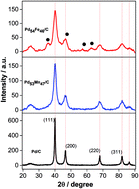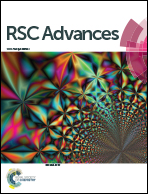Identification of chemicals resulted in selective glycerol conversion as sustainable fuel on Pd-based anode nanocatalysts
Abstract
Palladium-based nanoparticles were prepared using mild microwave-assisted heating. The activity of carbon supported PdM (M = Mn and Fe) toward glycerol oxidation in alkaline medium was studied by coupling electrochemical, analytical and in situ spectroscopic techniques. The complementary findings showed that glycerol was converted into oxalate, tartronate, glycerate, glycolate and formate. The ex situ analytical methods (liquid chromatography and mass spectrometry) were helpful to reveal glycerate as the major reaction product on PdM/C anodes, while from in situ infrared spectroscopy measurements no irreversible adsorbed poisoning species was detected in glycerol or intermediate oxidation to carbonate at the prepared electrodes. The correlation of the analytical and physicochemical (XRD, EDX and TEM) results concerned the shift of the onset potential toward lower values and the high Faradaic currents due to electronic structures provided by the Mn and Fe contents to the Pd based materials. Accordingly, glycerol is a sustainable raw material, which can be used in cogeneration processes for renewable energy sources and selective production of added-value molecules.


 Please wait while we load your content...
Please wait while we load your content...